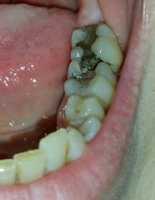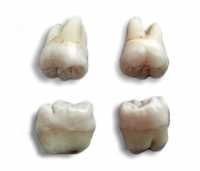MedicalResearch.com Interview with:
John M. Streicher, PhD
Professor, Neuroscience - GIDP
Professor, Pharmacology
College of Medicine Tucson
Pharmacology
University of Arizona
MedicalResearch.com: What is the background for this study?
Response: We first started studying terpenes around 2019, when my student Justin LaVigne became interested in these molecules and their potential interaction with cannabinoids and other chemicals in cannabis, the so-called “entourage effect.”
The literature at the time showed that terpenes could be beneficial in pain relief and other indications, in both animal and human studies; however, there were limits to the literature, such as a lack of investigation into therapeutic features like side effects and a relative lack of detailed molecular mechanisms. We started by testing 5 purified terpenes in mice, geraniol, linalool, beta-caryophyllene, alpha-humulene, and beta-pinene. We found they had a “cannabimimetic” effect in that they produced behaviors much like cannabinoids, but not through the cannabinoid receptors. This was published in 2021.
(more…)
Neurological Disorders, Pain Research / 24.03.2025
Relieving Neuropathy Pain: Revolutionary Treatments Helping You Walk With Less Pain
 Neuropathy is a debilitating condition that affects millions of people worldwide, causing discomfort, pain, and a significant reduction in quality of life. Fortunately, modern advancements in medical research have opened doors to innovative treatments that offer hope and healing to neuropathy sufferers. With a focus on the latest breakthroughs and expert recommendations, we will learn about neuropathy, its symptoms, and cutting-edge treatment options that are helping patients regain comfort and mobility.
Understanding Neuropathy and Its Symptoms
Neuropathy, often termed peripheral neuropathy, refers to a series of disorders resulting from damage to the peripheral nerves. These nerves are responsible for transmitting signals between your brain, spinal cord, and the rest of your body. Symptoms of neuropathy can vary widely and may include numbness, tingling, burning sensations, muscle weakness, and even sharp pains. Left untreated, these symptoms can lead to more severe complications, such as infections and balance issues. Identifying neuropathy early and seeking professional guidance is crucial for managing and mitigating its effects.
(more…)
Neuropathy is a debilitating condition that affects millions of people worldwide, causing discomfort, pain, and a significant reduction in quality of life. Fortunately, modern advancements in medical research have opened doors to innovative treatments that offer hope and healing to neuropathy sufferers. With a focus on the latest breakthroughs and expert recommendations, we will learn about neuropathy, its symptoms, and cutting-edge treatment options that are helping patients regain comfort and mobility.
Understanding Neuropathy and Its Symptoms
Neuropathy, often termed peripheral neuropathy, refers to a series of disorders resulting from damage to the peripheral nerves. These nerves are responsible for transmitting signals between your brain, spinal cord, and the rest of your body. Symptoms of neuropathy can vary widely and may include numbness, tingling, burning sensations, muscle weakness, and even sharp pains. Left untreated, these symptoms can lead to more severe complications, such as infections and balance issues. Identifying neuropathy early and seeking professional guidance is crucial for managing and mitigating its effects.
(more…)
Editor’ note: Cannabis and THCA/HEMP CBD products should have an active ingredient list on the container and have a Certificate of Analysis (COA).
Discuss your use of CBD products with your health care provider. Dosing of CBD is variable, especially since it is not FDA regulated. CBD may interfere with other medications and should not be used in individuals with certain health conditions, including liver issues. CBD skin care products can be absorbed through the skin and have similar effects. Do not use Cannabis products including edibles and CBD if you are pregnant, nursing or may become pregnant. Do not use cannabis products if driving or operating difficult or dangerous machinery. Children should not be exposed to cannabis or CBD products.
Medicinal cannabis is a revolutionary approach to pain management, particularly in patients where conventional medications fail to offer them adequate relief or create intolerable side effects. With ongoing research on cannabis and its medicinal properties, its effectiveness for pain relief has become more convincing. Here are some reasons why medicinal cannabis has risen in popularity in pain management.
Natural Pain Relief Without Risks from Opioids
Many countries have been grappling with an opioid crisis, which has motivated patients to seek cannabis as a much safer alternative. Medicinal cannabis minimizes the risks of addiction associated with opioids due to misuse and gives little risk of an overdose. To obtain medicinal cannabis legally, there are options like medical marijuana cards you can obtain from providers such as Leafy Doc Mississippi. Regarding how cannabis works in terms of pain relief, cannabinoids like THC bind to receptors in the brain and the immune system, modulating the experience of pain. The endocannabinoid system engages with trauma states mainly on account of pain, mood regulation, and inflammation. However, for long-term relief, medicinal cannabis is viewed as a considerably safer alternative compared to opioids. (more…)
Accidents & Violence, Pain Research / 04.02.2025
Delayed Pain: A Condition Most Car Accident Victims Ignore
A car accident is a traumatizing experience. The aftermath often leaves victims shaken and stressed. Although a few injuries, such as broken bones, cuts, or bruises, can be immediately felt. Many do not feel any pain immediately after an accident, thus giving them an illusion of safety.
Delayed pain and other symptoms can appear hours, days, or even weeks after an accident, making it easy to underestimate the severity of the injury. Car accident victims must understand what delayed pain is and why it occurs. That knowledge is critical to ensure that they receive proper treatment. What is Delayed Pain? Delayed pain is discomfort that develops after an accident, typically showing up after a few hours or days. It can range from soreness and stiffness to more severe neck, back, shoulder, or internal pain. Some common delayed pain conditions include whiplash, muscle strains, ligament injuries, herniated discs, and concussions. (more…)
Addiction, Pain Research / 09.12.2024
Navigating Chronic Pain Without Relapse: A Guide for Those in Recovery
Managing chronic pain while maintaining sobriety is a common yet challenging struggle for many individuals in recovery. Chronic pain—persistent pain lasting more than three months—can stem from injury, illness, or conditions like arthritis or fibromyalgia. For those who have struggled with addiction, finding safe and effective pain management options is crucial to prevent relapse. Here, we explore practical strategies for managing chronic pain without compromising recovery.
Building a Strong Foundation: Communication with Healthcare Providers
Open communication with healthcare providers is essential in building a safe pain management plan. It’s important for individuals in recovery to disclose their addiction history to all medical professionals involved in their care. This disclosure enables healthcare providers to prioritize non-addictive treatments and monitor for potential relapse risks. Patients can also benefit from asking providers about alternative, non-opioid medications that can help manage their pain. Options such as anti-inflammatory drugs, muscle relaxants, or nerve-blocking medications can provide relief without the addictive risks. If opioids are unavoidable in some cases, discussing the lowest effective dosage and shortest duration can help minimize risks. (more…)
Editor’ note: Cannabis and THCA/HEMP CBD products should have an active ingredient list on the container and have a Certificate of Analysis (COA). Discuss your use of CBD products with your health care provider. Dosing of CBD is variable, especially since it is not FDA regulated. CBD may interfere with other medications and should not be used in individuals with certain health conditions, including liver issues. CBD skin care products can be aborbed through the skin and have similar effects.
Do not use Cannabis products including edibles and CBD if you are pregnant, nursing or may become pregnant. Do not use cannabis products if driving or operating difficult or dangerous machinery. Children should not be exposed to cannabis or CBD products.
Medicinal cannabis is a revolutionary approach to pain management, particularly in patients where conventional medications fail to offer them adequate relief or create intolerable side effects. With ongoing research on cannabis and its medicinal properties, its effectiveness for pain relief has become more convincing. Here are some reasons why medicinal cannabis has risen in popularity in pain management.
Natural Pain Relief Without Risks from Opioids
Many countries have been grappling with an opioid crisis, which has motivated patients to seek cannabis as a much safer alternative. Medicinal cannabis minimizes the risks of addiction associated with opioids due to misuse and gives no risks of an overdose. To obtain medicinal cannabis legally, there are options like medical marijuana cards you can obtain from providers such as Leafy Doc Mississippi. Regarding how cannabis works in terms of pain relief, cannabinoids like THC bind to receptors in the brain and the immune system, modulating the experience of pain. The endocannabinoid system engages with trauma states mainly on account of pain, mood regulation, and inflammation. However, for long-term relief, medicinal cannabis is viewed as a considerably safer alternative compared to opioids. (more…)
Neck pain is a widespread issue that transcends age, geography, and lifestyle, making it an unavoidable reality for many individuals. Studies indicate that around 10% to 20% of the population will sometimes experience neck pain with varying degrees of severity. This common ailment is often underestimated but can significantly impact a person's daily activities, productivity, and overall quality of life. Consequently, it's essential to understand its prevalence and recognize that timely interventions, such as the Las Vegas Neck Pain solutions, can offer substantial relief and improve daily functioning.
Common Causes of Neck Pain
The causes of neck pain are as varied as the symptoms, with factors often overlapping in complex ways. The modern lifestyle, heavily reliant on digital devices, has resulted in a phenomenon known as “tech neck,” caused by the perpetual forward head posture while looking at screens. Furthermore, degenerative conditions like osteoarthritis and spondylosis, which naturally occur as people age, contribute to the discomfort experienced in the neck region. Stress, often an overlooked factor, can exacerbate these physical symptoms by causing muscle tension and fatigue. Understanding these causes enables individuals to adopt preventive measures tailored to their specific risk factors. (more…) The unpleasant sensation of chronic pain can have a considerable impact on an individual's life. Frequently lasting for months or years, chronic can affect individuals in any part of the body and for a variety of reasons. Chronic pain conditions affect a large number of Americans, who are left with no choice but to resort to various alternative medicines and physiotherapy.
This blog reflects the professional opinions of several pain management doctors and discusses their professional opinions regarding pain management techniques and treatments. Effective pain management hinges on a comprehensive approach that involves medication and appropriate therapy.
Let us explore some of the best practices for pain management.
The unpleasant sensation of chronic pain can have a considerable impact on an individual's life. Frequently lasting for months or years, chronic can affect individuals in any part of the body and for a variety of reasons. Chronic pain conditions affect a large number of Americans, who are left with no choice but to resort to various alternative medicines and physiotherapy.
This blog reflects the professional opinions of several pain management doctors and discusses their professional opinions regarding pain management techniques and treatments. Effective pain management hinges on a comprehensive approach that involves medication and appropriate therapy.
Let us explore some of the best practices for pain management.
Understanding Pain and its Causes
The first stage in developing a pain treatment strategy is identifying pain's kind, origin, cause, and character. Understanding what may be causing pain allows for targeted treatment as different conditions demand varying and specific remedy methods. Patients can seek advice from the experienced and trusted doctors for pain management franklin tn to understand the nuances of their chronic pain, evaluate its intensity, and schedule the appropriate treatment process. (more…)“There is probably no other medical condition which is treated in so many different ways and by such a variety of practitioners as back pain.” – John Sarno. Chronic back pain is a pervasive and debilitating issue that affects millions of people around the globe. For many, it goes beyond just discomfort to crippling suffering on both physical and mental levels that can make life difficult in general. Though progress has been slow, there are some new discussions coming out of recent research findings that offer hope for those who have found themselves battling this type of chronic pain.
The BEST Trial's Hopeful Message for Back Pain Patients
 Chronic back pain troubles many people. Often, it seems as if there is hardly any relief available to them, but there is new research going on that promises better results - The BEST trial. Led by Dr Daniel Clauw from the University of Michigan, along with a team specializing in pain treatment, they aim to find effective strategies that can be custom-fit for distinct individuals suffering from back pain. Around 800 patients will participate in this process. BEST stands for Biomarkers for Evaluating Spine Treatments. It's part of the BACPAC Research Program and is supported by the National Institute of Arthritis and Musculoskeletal Skin Diseases through the NIH HEAL Initiative. The goal here is simple yet profound: Understand which treatment or combination works best depending on unique traits specific to patients. This bird’s eye perspective could benefit all chronic low back-pain sufferers across America. Their findings might link specific characteristics (known as biomarkers) with different treatments’ effectiveness levels thus helping doctors help patients better. If everything goes according to plan, every chronic lower-back pain patient may receive their tailored treatment, setting them up towards a recovery road.
Chronic back pain troubles many people. Often, it seems as if there is hardly any relief available to them, but there is new research going on that promises better results - The BEST trial. Led by Dr Daniel Clauw from the University of Michigan, along with a team specializing in pain treatment, they aim to find effective strategies that can be custom-fit for distinct individuals suffering from back pain. Around 800 patients will participate in this process. BEST stands for Biomarkers for Evaluating Spine Treatments. It's part of the BACPAC Research Program and is supported by the National Institute of Arthritis and Musculoskeletal Skin Diseases through the NIH HEAL Initiative. The goal here is simple yet profound: Understand which treatment or combination works best depending on unique traits specific to patients. This bird’s eye perspective could benefit all chronic low back-pain sufferers across America. Their findings might link specific characteristics (known as biomarkers) with different treatments’ effectiveness levels thus helping doctors help patients better. If everything goes according to plan, every chronic lower-back pain patient may receive their tailored treatment, setting them up towards a recovery road.
Author Interviews, Brigham & Women's - Harvard, Neurology, Pain Research / 29.03.2022
Brigham Study Identifies Genes That Drive Migraines
MedicalResearch.com Interview with:
William R. Renthal, MD, PhD
Director of Research, John R. Graham Headache Center
Department of Neurology
Brigham and Women's Hospital
Assistant Professor of Neurology, Harvard Medical School
MedicalResearch.com: What is the background for this study?
Response: We know that a nervous system structure called the trigeminal ganglion plays a critical role in migraine headache, but the cell types that exist in this structure are poorly understood. We have used cutting-edge, single-cell genomic technologies to profile the genes expressed within each trigeminal ganglion cell type in both human and mouse with the goal of identifying molecular features that could allow us to inhibit head pain selectively without affecting other cell types.
(more…)
Author Interviews, Brigham & Women's - Harvard, Clots - Coagulation, Hematology, Neurological Disorders, Pain Research / 22.05.2021
Migraine with Aura May Be Linked to Blood Clotting Factors
MedicalResearch.com Interview with:
Daniel Chasman, PhD
Pamela Rist, ScD,
Yanjun Guo, MD, PhD
Division of Preventative Medicine
Brigham and Women’s Hospital
MedicalResearch.com: What is the background for this study? What are the main findings?
Response: There has been speculation in the field about relationships between coagulation and migraine susceptibility for some time, but previous research has been largely inconclusive. In this study, we leveraged Mendelian randomization, a mode of genetic analysis that can support or refute potential causal effects on a health outcome, to examine whether hemostatic factors may contribute to risk of MA. (more…)
Author Interviews, Diabetes, Neurology, Pain Research / 10.12.2020
Engensis: Growth-Factor Inducing DNA Evaluated for Severe Diabetic Nerve Pain
MedicalResearch.com Interview with:
William K. Schmidt, Ph.D.
Senior VP Clinical Development
 Helixmith Co. Ltd.
MedicalResearch.com: What is the background for this study? How common is diabetic peripheral neuropathy and how does it affect patients?
Response: According to the Centers for Disease Control and Prevention (CDC), over 34 million people in the United States have diabetes (about 10% of the U.S. population) and about one in four patients do not know that they have it (https://www.cdc.gov/chronicdisease/resources/publications/factsheets/diabetes-prediabetes.htm). Diabetes can cause significant damage to nerves in the feet, hands, eyes, and other parts of the body.
Diabetic peripheral neuropathy (DPN) is the most common form of nerve damage worldwide; it affects approximately half of the patients with diabetes (Iqbal et al., 2018). In many individuals, severe burning, tingling, “pins and needles,” or cramping pain can occur simultaneously in both feet without external evidence of foot damage. Despite the pain, symptoms may be accompanied by numbness or loss of sensation in the feet. This is called painful diabetic peripheral neuropathy (painful DPN or P-DPN) and may affect up to one-third of the general diabetic population (Yoo et al., 2013). P-DPN may cause increased anxiety and depression, sleep impairment, and difficulties with walking. Up to one-third of P-DPN patients may require the use of a cane, walker, or even a wheelchair due to extreme foot pain. Once P-DPN occurs, it may result in a lifetime of pain and disability.
FDA-approved daily oral medications often used to treat P-DPN include Neurontin (gabapentin), Lyrica (pregabalin), Cymbalta (duloxetine), and Nucynta ER (tapentadol). While these “neuropathic pain” medications may dull the pain for some subjects, they produce significant side effects that may be troubling for many patients. Indeed, many patients stop using these pain killers due to lack of effectiveness at doses that they can tolerate (van Nooten et al., 2017) There is also a topical 8% capsaicin patch, but again with limited efficacy. It is well known that the most severely affected patients may require opioid analgesics to control P-DPN (Pesa et al., 2013).
None of the currently used medications have disease-modifying effects. However, our new injectable medication is now in advanced clinical development that has the potential disease-modifying effects lasting months after each treatment, with limited or no side effects for most patients aside from brief injection site discomfort.
(more…)
Helixmith Co. Ltd.
MedicalResearch.com: What is the background for this study? How common is diabetic peripheral neuropathy and how does it affect patients?
Response: According to the Centers for Disease Control and Prevention (CDC), over 34 million people in the United States have diabetes (about 10% of the U.S. population) and about one in four patients do not know that they have it (https://www.cdc.gov/chronicdisease/resources/publications/factsheets/diabetes-prediabetes.htm). Diabetes can cause significant damage to nerves in the feet, hands, eyes, and other parts of the body.
Diabetic peripheral neuropathy (DPN) is the most common form of nerve damage worldwide; it affects approximately half of the patients with diabetes (Iqbal et al., 2018). In many individuals, severe burning, tingling, “pins and needles,” or cramping pain can occur simultaneously in both feet without external evidence of foot damage. Despite the pain, symptoms may be accompanied by numbness or loss of sensation in the feet. This is called painful diabetic peripheral neuropathy (painful DPN or P-DPN) and may affect up to one-third of the general diabetic population (Yoo et al., 2013). P-DPN may cause increased anxiety and depression, sleep impairment, and difficulties with walking. Up to one-third of P-DPN patients may require the use of a cane, walker, or even a wheelchair due to extreme foot pain. Once P-DPN occurs, it may result in a lifetime of pain and disability.
FDA-approved daily oral medications often used to treat P-DPN include Neurontin (gabapentin), Lyrica (pregabalin), Cymbalta (duloxetine), and Nucynta ER (tapentadol). While these “neuropathic pain” medications may dull the pain for some subjects, they produce significant side effects that may be troubling for many patients. Indeed, many patients stop using these pain killers due to lack of effectiveness at doses that they can tolerate (van Nooten et al., 2017) There is also a topical 8% capsaicin patch, but again with limited efficacy. It is well known that the most severely affected patients may require opioid analgesics to control P-DPN (Pesa et al., 2013).
None of the currently used medications have disease-modifying effects. However, our new injectable medication is now in advanced clinical development that has the potential disease-modifying effects lasting months after each treatment, with limited or no side effects for most patients aside from brief injection site discomfort.
(more…)
Author Interviews, Pain Research / 28.07.2020
Promising New Analgesic Offers Pain Relief Without Liver Toxicity
MedicalResearch.com Interview with:
Hernan Bazan, MD DFSVS FACS
CEO & Co-founder, South Rampart Pharma, LLC and
Professor of Surgery, Section of Vascular/Endovascular Surgery
Program Director, Vascular Surgery Fellowship
Ochsner Clinic New Orleans, LA 70121
MedicalResearch.com: What is the background for this study? What are the main findings?
Response: The work in this paper is in large part due to several active and productive collaborations to address a simple problem: introduce a safer way to treat pain. That is, without the risk of opioids (abuse potential), acetaminophen/paracetamol (liver toxicity) and non-steroidal anti-inflammatory drugs (NSAIDs)/ibuprofen (kidney toxicity).
Acetaminophen hepatotoxicity remains the most common cause of acute liver failure in the U.S. with inadvertent hepatotoxicity the etiology in half of all case. Our aim was to overcome this toxicity by creating acetaminophen analogs and this paper describes the rationale for this synthesis, the library of compounds used to select the lead compounds to develop, the consistent lack of hepatotoxicity cell lines and small animals, and its ability to reduce pain and fever in small animal studies. Moreover, we explain the mechanisms of action for the lack of hepatotoxicity.
One mechanism for acetaminophen-induced hepatotoxicity is via formation of the electrophilic reactive metabolite, NAPQI. Using ultraperformance liquid chromatography tandem mass spectrometry (LC-MS/MS) to detect NAPQI, we observed that after CD1 mice were exposed to high doses (600 mg/kg) of either acetaminophen or SRP compounds, only acetaminophen-, but not SRP-compound-treated mice, generated the toxic metabolite NAPQI. Another mechanism for acetaminophen hepatotoxicity is loss of hepatic tight junctions and chicken wire’ hepatic tight junctions remain intact in SRP-treated animals while these junctions are lost in acetaminophen-treated animals. (more…)
Author Interviews, JAMA, Pain Research / 11.06.2020
Migraine with Aura Linked to Cardiovascular Disease Risk
MedicalResearch.com Interview with:
 Tobias Kurth, MD, ScD (Pronouns: he/him)
Professor of Public Health and Epidemiology
Director, Institute of Public Health
Charité – Universitätsmedizin Berlin
MedicalResearch.com: What is the background for this study?
Response: Migraine (with aura) has been associated with increased risk of cardiovascular disease but its absolute contribution in relation to other major vascular risk factors was not unclear. (more…)
Tobias Kurth, MD, ScD (Pronouns: he/him)
Professor of Public Health and Epidemiology
Director, Institute of Public Health
Charité – Universitätsmedizin Berlin
MedicalResearch.com: What is the background for this study?
Response: Migraine (with aura) has been associated with increased risk of cardiovascular disease but its absolute contribution in relation to other major vascular risk factors was not unclear. (more…)
 Tobias Kurth, MD, ScD (Pronouns: he/him)
Professor of Public Health and Epidemiology
Director, Institute of Public Health
Charité – Universitätsmedizin Berlin
MedicalResearch.com: What is the background for this study?
Response: Migraine (with aura) has been associated with increased risk of cardiovascular disease but its absolute contribution in relation to other major vascular risk factors was not unclear. (more…)
Tobias Kurth, MD, ScD (Pronouns: he/him)
Professor of Public Health and Epidemiology
Director, Institute of Public Health
Charité – Universitätsmedizin Berlin
MedicalResearch.com: What is the background for this study?
Response: Migraine (with aura) has been associated with increased risk of cardiovascular disease but its absolute contribution in relation to other major vascular risk factors was not unclear. (more…)
Author Interviews, Neurological Disorders, Neurology, Pain Research / 11.05.2020
Migraine: Yoga May Be Useful Addition to Medical Therapy
MedicalResearch.com Interview with:
Holly Yancy, DO
Headache medicine specialist
Banner – University Medicine Neuroscience Institute
Phoenix, AZ
Dr. Yancy comments on the recent Neurology journal article on the potential impact of yoga on migraine.
MedicalResearch.com: What is the background for this study? How might yoga reduce migraine intensity or frequency?
Response: The authors of this trial have studied the benefits of yoga when added to medical management of episodic migraine. They expand on prior, smaller reports of the potential benefit of yoga and mindfulness to migraine patients with a well-designed study that shows yoga, as an adjunct to preventive medication, can lower the intensity, frequency and impact of migraines. Participants even used less abortive medication.
The authors propose multiple potential mechanisms of action, including an increase in parasympathetic / decrease in sympathetic nervous system activity, decreased muscle tension, and stress management. (more…)
Author Interviews, Dental Research, JAMA, Pain Research / 19.03.2020
Dental Work: Patient Satisfaction No Better With Opioids For Pain
MedicalResearch.com Interview with:
Dr. Romesh P. Nalliah BDS, MHCM
Associate Dean for Patient Services
Clinical Professor
Institute for Healthcare Policy & Innovation
Michigan Institute for Data Science
Director, Synergy Program
MedicalResearch.com: What is the background for this study?
Response: We designed and conducted this study because there is a paucity of knowledge related to opioid prescribing for acute dental pain. (more…)
Author Interviews, Neurology, Pain Research / 12.02.2020
Hyperexcitability in Visual Cortex Demonstrated in Migraine Sufferers
MedicalResearch.com Interview with:
Chun Yuen Fong
Post-doc research fellow
Center for Cognitive and Evolutionary Science
University of Tokyo
MedicalResearch.com: What is the background for this study?
Response: Migraine is one of the most prevalent neurological disorders worldwide. However, what exactly trigger a migraine episode is not entirely clear despite years of research. Moreover, migraine sufferers often report having excessive sensitivity to light and certain patterns during the headache-free period. Some researchers suggested that such abnormal sensations were associated with the enhanced cortical hyperexcitability of the migraine sufferers.
In our study, we aimed to build on this theory by comparing the neurophysiological activities between regular migraine sufferers and control using electroencephalography (EEG). Using the same research method, we also compared the neural activities between healthy participants who reported having more abnormal visual sensations to those with less.
(more…)
Author Interviews, JAMA, Neurology, Ophthalmology, Pain Research / 27.11.2019
Visual Snow as a Migraine Symptom
MedicalResearch.com Interview with:
Priv.-Doz. Dr. med. Christoph Schankin
Consultant
Head University Headache Clinic
Department of Neurology
Inselspital, Bern University Hospital
University of Bern
MedicalResearch.com: What is the background for this study?
Response: Visual snow syndrome is a debilitating disorder with a continuous TV snow-like visual disturbance that persists over years. Patients have additional visual problems, such as severe afterimages, floaters or photophobia. The syndrome is associated with migraine and migraine aura, but the interaction between the two remains unclear.
(more…)
Author Interviews, Opiods, Rheumatology / 12.11.2019
Researchers Question Value of Opioids in Osteoarthritis Treatment
MedicalResearch.com Interview with:
Raveendhara R. Bannuru MD, PhD, FAGE
Director, Center for Treatment Comparison and Integrative Analysis (CTCIA)
Deputy Director, Center for Complementary and Integrative Medicine (CCIM)
Asst Professor of Medicine, Tufts University School of Medicine
Asst Professor of Clinical & Translational Science, Sackler School of Graduate Biomedical Sciences
Division of Rheumatology, Tufts Medical Center
Boston, MA
MedicalResearch.com: What is the background for this study?
Response: Given the current controversy regarding the use of opioids in chronic pain, we wanted to delve deeper into the efficacy and safety profiles of oral opioid drugs in osteoarthritis patients. Temporal assessments like ours can reveal peak periods of efficacy, and can provide clinicians with a blueprint for optimal durations of treatment regimens. With respect to subgroup analyses based on strength of opioid binding affinity, we sought to explore currently held paradigms that strong opioids may be useful for the treatment of severe pain, and to specifically assess their relevance in OA populations. Knowledge of the relative efficacy and safety profiles of strong versus weak opioids can give clinicians the information they need to weigh benefits and harms of specific subgroups of opioids. (more…)
Addiction, Author Interviews, Opiods, Pain Research / 04.11.2019
Challenges of Controlling Pain While Minimizing Risk of Opioid Use Disorder
MedicalResearch.com Interview with:
Jack E. Henningfield, PhD
Vice President, Research, Health Policy, and Abuse Liability
Pinney Associates
Adjunct Professor of Behavioral Biology
Department of Psychiatry and Behavioral Science
Johns Hopkins University School of Medicine (more…)
Author Interviews, Pain Research, Rheumatology / 12.09.2019
Despite Many New Meds, 74% of RA Patients Expressed Dissatisfaction with Their Treatment
MedicalResearch.com Interview with:
W. Benjamin Nowell, Ph.D.
Director of Patient-Centered Research
CreakyJoints, Principal Investigator of ArthritisPower
MedicalResearch.com: What is the background for this study?
Response: Over the past fifteen years, the treatment options for people diagnosed and living with rheumatoid arthritis (RA) have grown. There are now many medications (particularly biologic disease-modifying antirheumatic drugs, or bDMARDs) proven to improve disease symptoms and immune system over activity, thereby reducing inflammation and joint damage. The American College of Rheumatology recommends a treat-to-target approach, which has the patient and rheumatologist setting goals for treatment effectiveness and making adjustments over time to meet those goals.
This study aimed to determine if rheumatoid arthritis patients are satisfied with their treatment. The goal of this study was to identify the following: patients’ satisfaction with current RA treatment, the current unmet needs perceived by patients with rheumatoid arthritis in the United States, the symptoms of rheumatoid arthritis that are most bothersome to patients, and the impact of symptoms on function and quality of life that may lead patients to need alternative treatments.
(more…)
Author Interviews, Global Health, Mental Health Research, Pain Research, Psychological Science / 07.09.2019
How Do Painful Rituals Affect Psychological Wellbeing?
MedicalResearch.com Interview with:
Dimitris Xygalatas, PhD
Assistant Professor, Anthropology (Affiliate)
Institute for Collaboration on Health, Intervention, and Policy (InCHIP)
UCONN
MedicalResearch.com: What is the background for this study?
Response: Ever since I was a graduate student, I have been intrigued by the performance of ritual practices that involve pain, bodily harm, and other forms of suffering. These rituals carry obvious risks, including health risks, but despite these risks they are performed voluntarily by millions of people around the world. And even more intriguing is the fact that in various contexts such rituals are often culturally prescribed remedies for a variety of maladies. When I was doing my doctoral fieldwork, I studied the fire-walking rituals of the Anastenaria in Northern Greece, and I heard several people describing their experience of participation as one that involved both suffering and healing. And of course I am not the first anthropologist to document this link. But these observations seemed puzzling to me. Some years later, I met one of the co-authors of this paper, Sammyh Khan, who was asking very similar questions.
We got a grant to design this study, and put together a team of researchers that spent two months in the field collecting data for this project. We studied the Hindu kavadi ritual, which involves piercing the body with numerous needles, hooks, and skewers, and various other forms of suffering. Our study took place in the island of Mauritius, where I have been conducting research over the last decade, but this ceremony is performed by millions of Hindus around the world. We used portable health monitors as well as interviews and survey instruments to document the effects of this ritual of psycho-physiological health and wellbeing. (more…)
Author Interviews, JAMA, OBGYNE, Opiods, Pain Research, University of Michigan / 29.07.2019
Risk Factors for Prolonged Opioid Use After Childbirth Identified
This work confirms the high prevalence of opioid prescribing demonstrated in prior studies and the long-term impact of this prescribing:...
Author Interviews, Global Health, Opiods, Pain Research, Primary Care / 26.07.2019
Pain Control Expectations Differ Between Patients from US and Other Countries
MedicalResearch.com Interview with:
Marisha Burden, MD, FACP, SFHM
Associate Professor of Medicine
Division Head of Hospital Medicine
University of Colorado School of Medicine
MedicalResearch.com: What is the background for this study?
Response: The United States has seen a marked increase in opioid prescribing since 2000 and while there has been a slight decline in prescribing since 2012, prescription rates for opioids still remain much higher than in the late 1990’s and are considerably higher when compared to other countries.
The US continues to see opioid-related complications such as overdoses, hospitalizations, and deaths. Hospitalized patients frequently experience pain and opioid medications are often the mainstay for treatment of pain. Studies have suggested that receipt of opioid prescriptions at the time of hospital discharge may increase risk for long-term use.
(more…)
Author Interviews, Opiods, Orthopedics, Rheumatology / 09.07.2019
Opioid use in Knee or Hip Osteoarthritis
MedicalResearch.com Interview with:
Professor Martin Englund MD PhD
Department of Orthopaedics
Lund University
MedicalResearch.com: What is the background for this study?
Response: Currently, there is lack of knowledge of opioid usage in osteoarthritis patients. Opioids are typically not recommended for the treatment of osteoarthritis pain. (more…)
Author Interviews, Dental Research, Opiods, Pain Research / 05.07.2019
Wisdom Teeth Extraction: Non-Opioid EXPAREL Reduced Need for Opioid Prescriptions
MedicalResearch.com Interview with:
Dr. Stuart Lieblich, DMD
Oral and maxillofacial surgeon
Avon, CT
MedicalResearch.com: What is the background for this study? How does EXPAREL® differ from other pain medication for dental work or other short-term procedures?
Response: This study analyzed the use of opioids and non-opioid options for postsurgical pain following third molar extraction (wisdom teeth removal). Our research team reviewed data from 600 patients who underwent third molar extraction, with 300 patients having received non-opioid option EXPAREL (bupivacaine liposome injectable suspension) and 300 patients that did not receive an infiltration of EXPAREL. The study aimed to show that reducing opioid prescriptions following this procedure may decrease opioid-related adverse events and the risk of opioid dependence.
(more…)
Author Interviews, Cancer Research, Cost of Health Care, JAMA, Pain Research / 21.06.2019
Chronic Pain in Cancer Patients Varies by Income and Insurance Status
MedicalResearch.com Interview with:
Changchuan (Charles) Jiang MD, MPH
MSSLW Internal Medicine Residency Program
Class of 2020
Ichan School of Medicine at Mount Sinai
MedicalResearch.com: What is the background for this study?
Response: Chronic pain is one of the common side effects of cancer treatments and it has been linked to low life quality, lower adherence to treatment, higher medical cost. As the population of cancer survivors grows rapidly, chronic pain will be a major public health issue in this population. We know from previous studies that chronic pain is common in certain cancers such as breast cancer. However, little was known about the epidemiology of chronic pain in the cancer survivors until our study.
(more…)
Author Interviews, Depression, Pain Research, Psychological Science / 19.06.2019
Study Finds Antidepressants Blunt Empathy
MedicalResearch.com Interview with:
Dr. Markus Rütgen PhD
Post-doctoral researcher
Social, Cognitive and Affective Neuroscience Unit
Faculty of Psychology
University of Vienna
MedicalResearch.com: What is the background for this study?
Response: Previous research has reported empathy deficits in patients with major depressive disorder. However, a high percentage of patients taking part in these studies were taking antidepressants, which are known to influence emotion processing. In our study, we wanted to overcome this important limitation. We were interested in whether the previously reported empathic deficits were attributable to the acute state of depression, or to the antidepressant treatment.
To this end, we performed a longitudinal neuroimaging study, in which we measured brain activity and self-reported empathy in response to short video clips showing people in pain. We measured acutely depressed patients twice. First, before they started their treatment, second, after three months of treatment with a state-of-the-art antidepressant (selective serotonin reuptake inhibitors).
(more…)
Annals Internal Medicine, Author Interviews, Opiods, University of Pittsburgh / 18.06.2019
Opioids During Hospitalization Linked to Post-Discharge Opioid Prescriptions
MedicalResearch.com Interview with:
Dr. Julie Donohue, Ph.D.
Professor, Department of Health Policy and Management
Vice Chair for Research
Graduate School of Public Health
University of Pittsburgh
MedicalResearch.com: What is the background for this study?
Response: The opioid epidemic is exacting a significant burden on families, communities and health systems across the U.S. Prescription and illicit opioids are responsible for the highest drug overdose mortality rates ever recorded. We know from previous studies that some surgical and medical patients who fill opioid prescriptions immediately after leaving the hospital go on to have chronic opioid use. Until our study, however, little was known about how and if those patients were being introduced to the opioids while in the hospital.
My colleagues and I reviewed the electronic health records of 191,249 hospital admissions of patients who had not been prescribed opioids in the prior year and were admitted to a community or academic hospital in Pennsylvania between 2010 and 2014. Opioids were prescribed in 48% of the admissions, with those patients being given opioids for a little more than two-thirds of their hospital stay, on average.
(more…)
Anesthesiology, Author Interviews, Duke, OBGYNE, Opiods, Pain Research, Surgical Research / 29.05.2019
Cesarean Section: Multimodal Program Using Non-Opioid EXPAREL Reduced Pain and Need for Opioids After Surgery
MedicalResearch.com Interview with:
 Ashraf Habib, MD
Chief of the Division of Women’s Anesthesia
Professor of Anesthesiology
Duke University
MedicalResearch.com: What is the background for this study? What are the main findings?
Response: This was a multicenter study conducted in 13 clinical sites in the United States enrolling patients undergoing elective Cesarean-section and receiving spinal anesthesia. 186 patients were enrolled and randomized to receive EXPAREL, a long-acting, non-opioid option to manage postsurgical pain, administered via transversus abdominis plane (TAP) field block, mixed with plain bupivacaine or TAP block with plain bupivacaine alone. A TAP block numbs the nerves that supply the abdominal wall. We presented the data at the 51st Annual Meeting of the Society of Obstetric Anesthesia and Perinatology (SOAP) in Phoenix, AZ.
We aimed to collect clinical evidence that a multimodal postsurgical pain regimen using a TAP block with EXPAREL (bupivacaine liposome injectable suspension) together with regularly scheduled acetaminophen and nonsteroidal anti-inflammatory drugs (NSAIDs) could reduce opioid consumption more so than a standard multimodal pain control approach that combines TAP block with standard bupivacaine, regularly scheduled acetaminophen, and NSAIDs.
(more…)
Ashraf Habib, MD
Chief of the Division of Women’s Anesthesia
Professor of Anesthesiology
Duke University
MedicalResearch.com: What is the background for this study? What are the main findings?
Response: This was a multicenter study conducted in 13 clinical sites in the United States enrolling patients undergoing elective Cesarean-section and receiving spinal anesthesia. 186 patients were enrolled and randomized to receive EXPAREL, a long-acting, non-opioid option to manage postsurgical pain, administered via transversus abdominis plane (TAP) field block, mixed with plain bupivacaine or TAP block with plain bupivacaine alone. A TAP block numbs the nerves that supply the abdominal wall. We presented the data at the 51st Annual Meeting of the Society of Obstetric Anesthesia and Perinatology (SOAP) in Phoenix, AZ.
We aimed to collect clinical evidence that a multimodal postsurgical pain regimen using a TAP block with EXPAREL (bupivacaine liposome injectable suspension) together with regularly scheduled acetaminophen and nonsteroidal anti-inflammatory drugs (NSAIDs) could reduce opioid consumption more so than a standard multimodal pain control approach that combines TAP block with standard bupivacaine, regularly scheduled acetaminophen, and NSAIDs.
(more…)
 Ashraf Habib, MD
Chief of the Division of Women’s Anesthesia
Professor of Anesthesiology
Duke University
MedicalResearch.com: What is the background for this study? What are the main findings?
Response: This was a multicenter study conducted in 13 clinical sites in the United States enrolling patients undergoing elective Cesarean-section and receiving spinal anesthesia. 186 patients were enrolled and randomized to receive EXPAREL, a long-acting, non-opioid option to manage postsurgical pain, administered via transversus abdominis plane (TAP) field block, mixed with plain bupivacaine or TAP block with plain bupivacaine alone. A TAP block numbs the nerves that supply the abdominal wall. We presented the data at the 51st Annual Meeting of the Society of Obstetric Anesthesia and Perinatology (SOAP) in Phoenix, AZ.
We aimed to collect clinical evidence that a multimodal postsurgical pain regimen using a TAP block with EXPAREL (bupivacaine liposome injectable suspension) together with regularly scheduled acetaminophen and nonsteroidal anti-inflammatory drugs (NSAIDs) could reduce opioid consumption more so than a standard multimodal pain control approach that combines TAP block with standard bupivacaine, regularly scheduled acetaminophen, and NSAIDs.
(more…)
Ashraf Habib, MD
Chief of the Division of Women’s Anesthesia
Professor of Anesthesiology
Duke University
MedicalResearch.com: What is the background for this study? What are the main findings?
Response: This was a multicenter study conducted in 13 clinical sites in the United States enrolling patients undergoing elective Cesarean-section and receiving spinal anesthesia. 186 patients were enrolled and randomized to receive EXPAREL, a long-acting, non-opioid option to manage postsurgical pain, administered via transversus abdominis plane (TAP) field block, mixed with plain bupivacaine or TAP block with plain bupivacaine alone. A TAP block numbs the nerves that supply the abdominal wall. We presented the data at the 51st Annual Meeting of the Society of Obstetric Anesthesia and Perinatology (SOAP) in Phoenix, AZ.
We aimed to collect clinical evidence that a multimodal postsurgical pain regimen using a TAP block with EXPAREL (bupivacaine liposome injectable suspension) together with regularly scheduled acetaminophen and nonsteroidal anti-inflammatory drugs (NSAIDs) could reduce opioid consumption more so than a standard multimodal pain control approach that combines TAP block with standard bupivacaine, regularly scheduled acetaminophen, and NSAIDs.
(more…)























